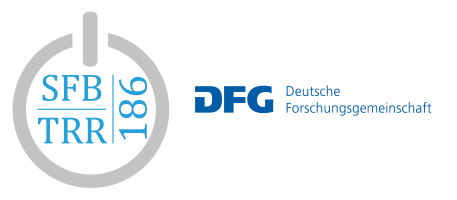The palmitoylation switch in activated T cells.
Reversible protein palmitoylation is a post-translational modification that enables membrane-proximal
positioning of cytosolic proteins or cytosolic loops of transmembrane proteins. The partitioning of proteins
within the membrane or shuttling between membranes is promoted by acylation. Furthermore, biologically
relevant processes such as membrane fusion or the initiation of receptor-proximal signaling pathways can be
modulated or invoked by palmitoylation, often initiated by conformational changes at the site of modification.
Efficient palmitoylation requires enzymes of the DHHC family transmembrane proteins that are localized at the
ER, Golgi or plasma membrane. The palmitoylation reaction requires palmitoyl-CoA and the target protein as
substrates, with an auto-palmitoylation of the active site cysteine as a covalent intermediate. In T cells, by
comparing the cellular palmitomes of non-stimulated and T cell receptor-activated cells, we detected changes
in palmitoylation of a significant number of proteins in the steady state (palm switch experiment). Candidate
DHHC family members responsible for these changes as well as DHHC substrate proteins were identified and
will be further interrogated in the proposed third funding period. A major question relates to the palmitoylation
switch at the mechanistic level and the characterization of DHHC-substrate protein interactions that define
specificity or allow for promiscuity. A particular focus will be on the mechanistic investigation of the substrate
recognition of DHHC20 and DHHC18 proteins, two PATs for which we discovered increased autopalmitoylation
levels upon T cell stimulation, and their structural investigation by cross-linking mass
spectrometry, NMR spectroscopy and cryo electron microscopy. CKAP4 and other DHHC substrate proteins
that we started to investigate in the current funding period will be interrogated with regard to T cell signaling
events that lead to changes in cytokine expression, adhesive behavior or Ca2+-signaling. The emerging link
between palmitoylation and regulation of Ca2+-channels will be challenged by molecular interference with
DHHC-target interactions. In addition to characterizing changes in protein palmitoylation, we will track changes
in lipid compositions upon T cell activation. Specifically, we will examine how TCR stimulation impacts the
distribution and de novo synthesis of palmitate and palmitoyl-CoA, as well as other signaling lipids. These
global changes in lipid compositions will be compared to changes in protein palmitoylation patterns, potentially
revealing effects of cellular acyl-CoA species on lipidation in terms of their concentrations, species distributions
and localizations. Ultimately, we aim to define the structural, molecular, and cellular underpinnings and
consequences of T cell palmitoylation switches, including various sets of enzymes, substrates and products of
these reactions.
Prof. Dr. Christian Freund (FU Berlin)
Prof. Dr. Britta Brügger (BZH Heidelberg)
